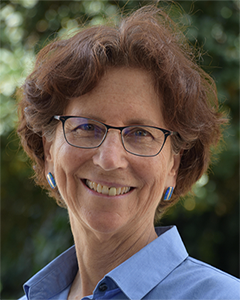“One factor that did not cause the rotating outage: California’s commitment to clean energy. Renewable energy did not cause the rotating outages.” That’s right, California’s climate policies and clean energy goals did not cause the state’s recent blackouts, as the three lead California energy agencies wrote in a letter to the Governor and the Legislature in August.
The solution to periods of high demand for electricity such as during heatwaves has historically been to increase supply. California Public Utilities Commission current rules require utilities to buy 15% excess energy capacity beyond what they would need during the forecast peaks for a given time of year. This approach failed us in August.
A 21st-century clean, reliable, safe, and equitable energy system can make the difference.
Clean energy community microgrids can enable utilities to better target specific outages and to isolate local electricity generation from the larger grid. This would ensure that essential governmental, health, and other services would remain powered in communities during outages.
As I wrote in The Climate Center’s op-ed published this past Sunday in the Sacramento Bee, “With wildfire season fully upon us, more power shutoffs leaving Californians in the dark are imminent. Add an economic crisis and a pandemic and it’s clear there is no time to lose.”
Sadly, PG&E’s approach to reliable power this year has included dirty diesel back-up generators that exacerbate climate change and create air pollution making us all more vulnerable to COVID– while not actually ensuring a stable grid.
Ironically, the first day that the blackouts hit, August 14, was also a deadline for formal comments on microgrids at the California Public Utilities Commission (CPUC), which regulates utilities such as PG&E. The Climate Center recently filed comments with Vote Solar urging the CPUC to fast-track its current rulemaking to open up microgrid markets and prioritize clean energy resilience for lower-income communities in particular.
We also have the technology right now to automatically reduce electricity use on the grid. Pre-agreements with large commercial and industrial customers can ensure that power is made available when needed to keep the system stable. Customers can even get paid to allow it, which is already happening in some places. The August blackouts were the result of a one-gigawatt (1,000 megawatts) shortfall, but this approach has been estimated by the Federal Energy Regulatory Commission to have the potential to free up over 4 gigawatts for California.
The dramatic climate impacts we are seeing right now here in California are further evidence of the urgency to act on the climate crisis. Please join us in supporting Community Energy Resilience and endorse Climate-Safe California today. Our science-based goal is to achieve net-negative emissions and the start of drawdown by 2030 in California, inspiring our country and the world to accelerated climate action.
To date, we have over 500 endorsements including businesses, non-profits, individuals, and government officials (see more here). Join us to help us exceed 1000 endorsements by December before the next session of the state legislature. Share this with your family, friends, and colleagues, and ask them to endorse and engage.
Together we will build the power required to secure a just transition to a climate-safe, equitable future for all.


